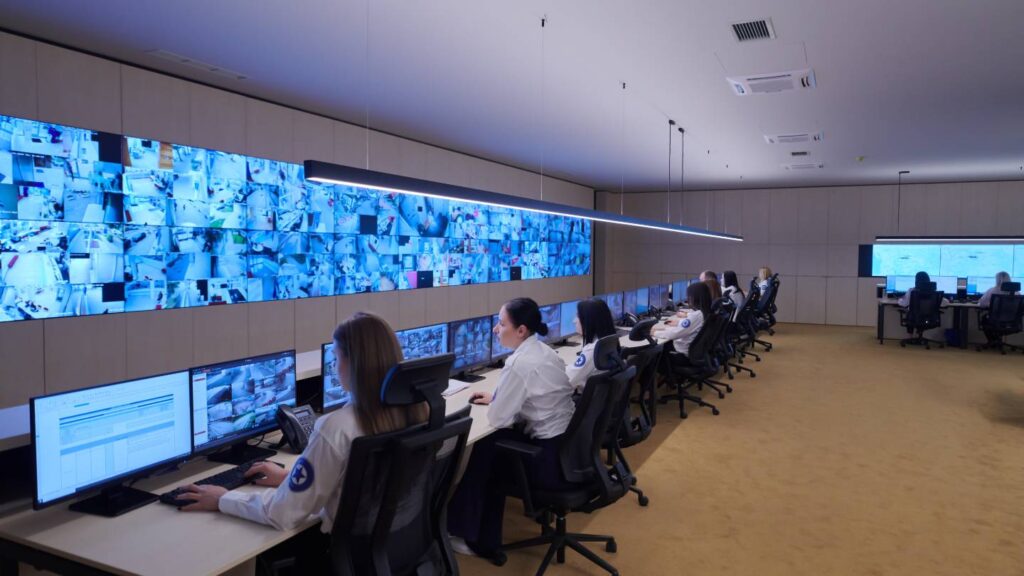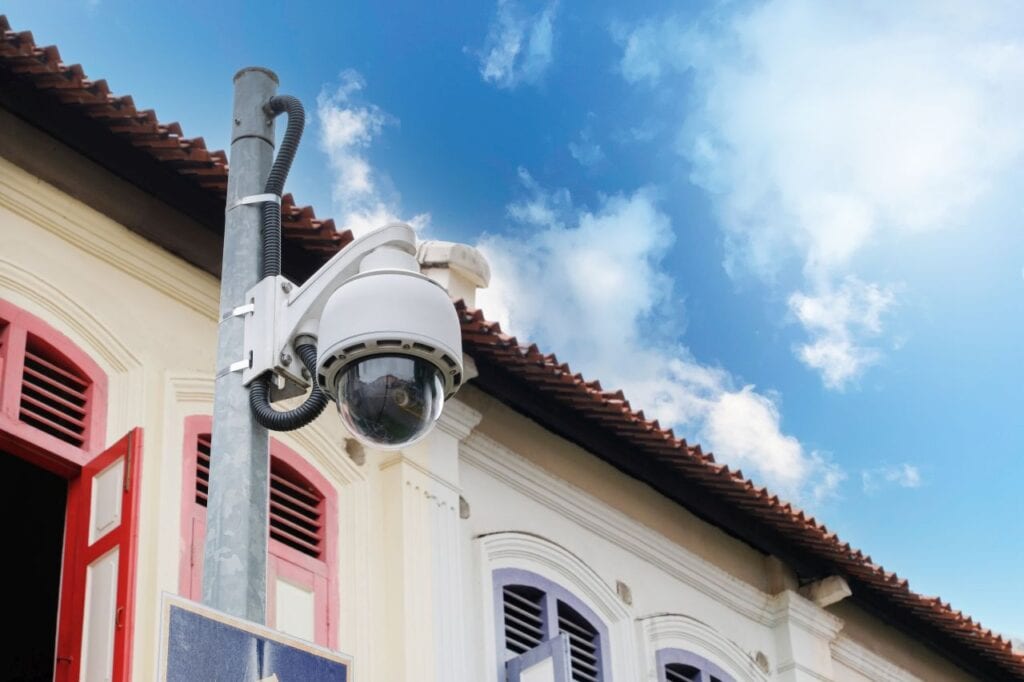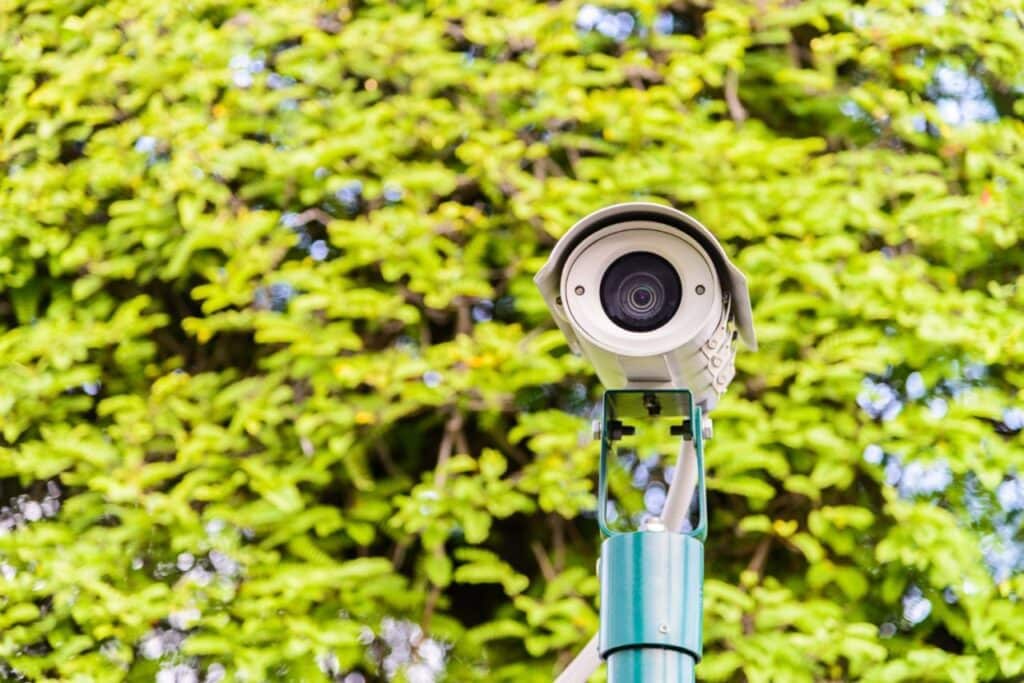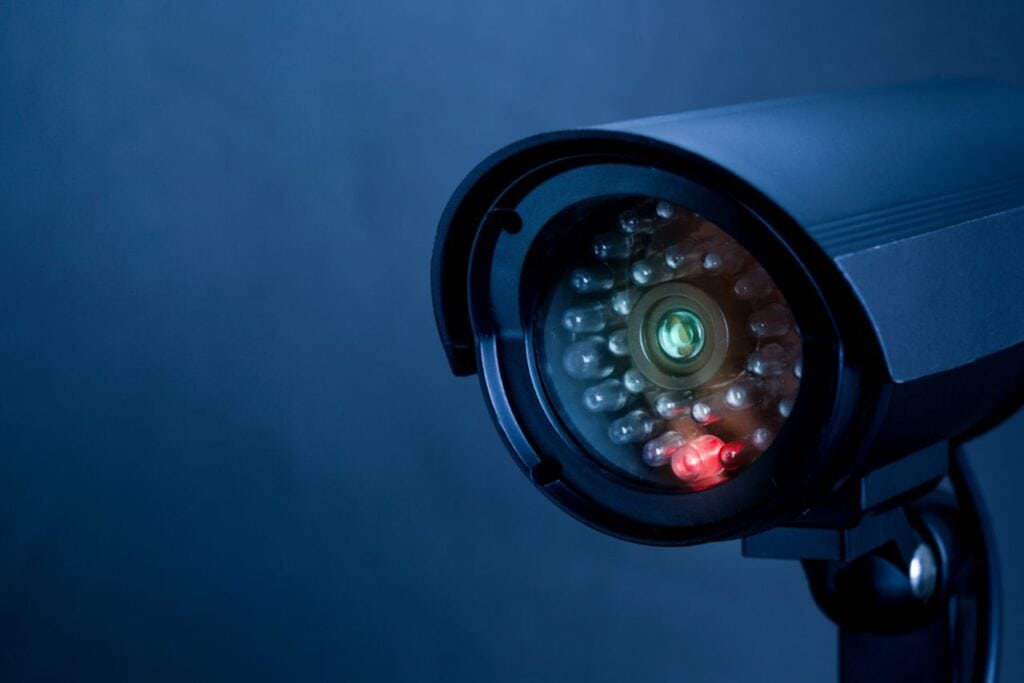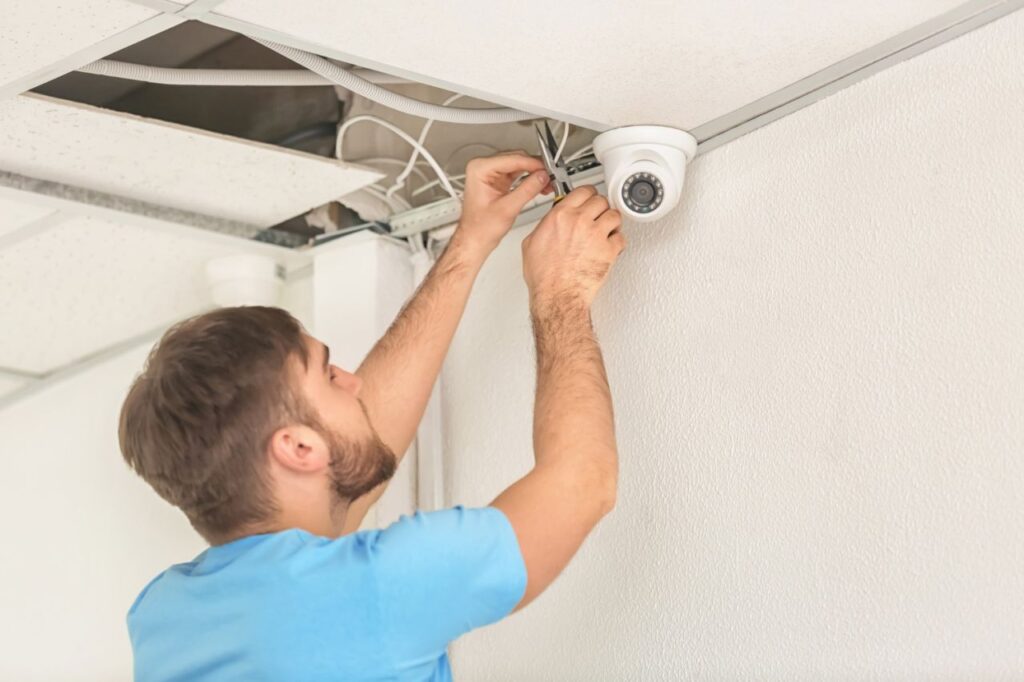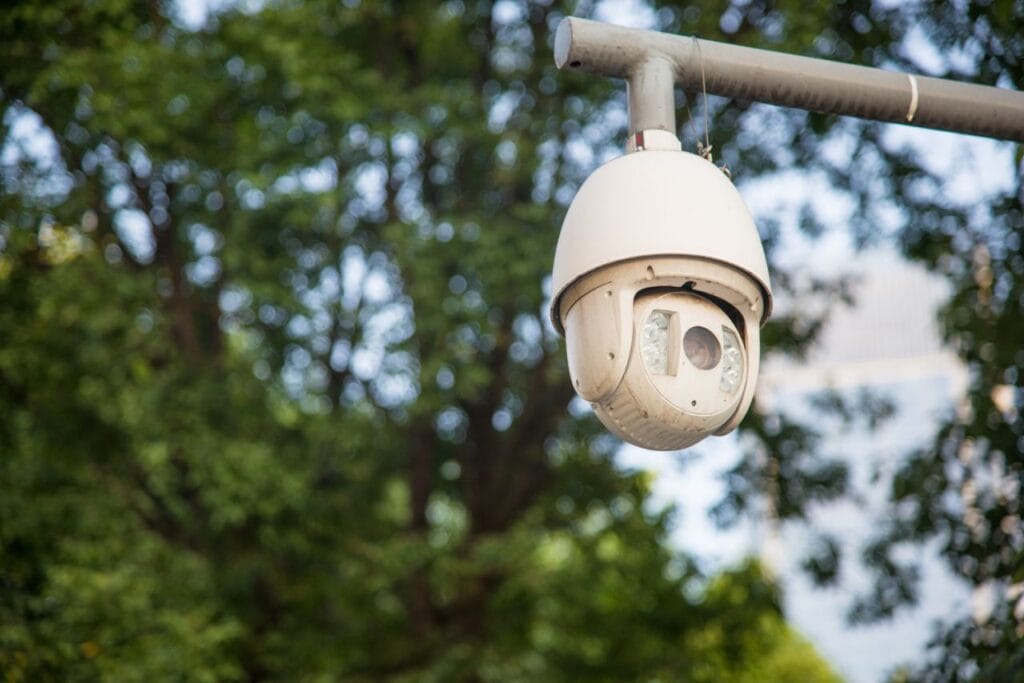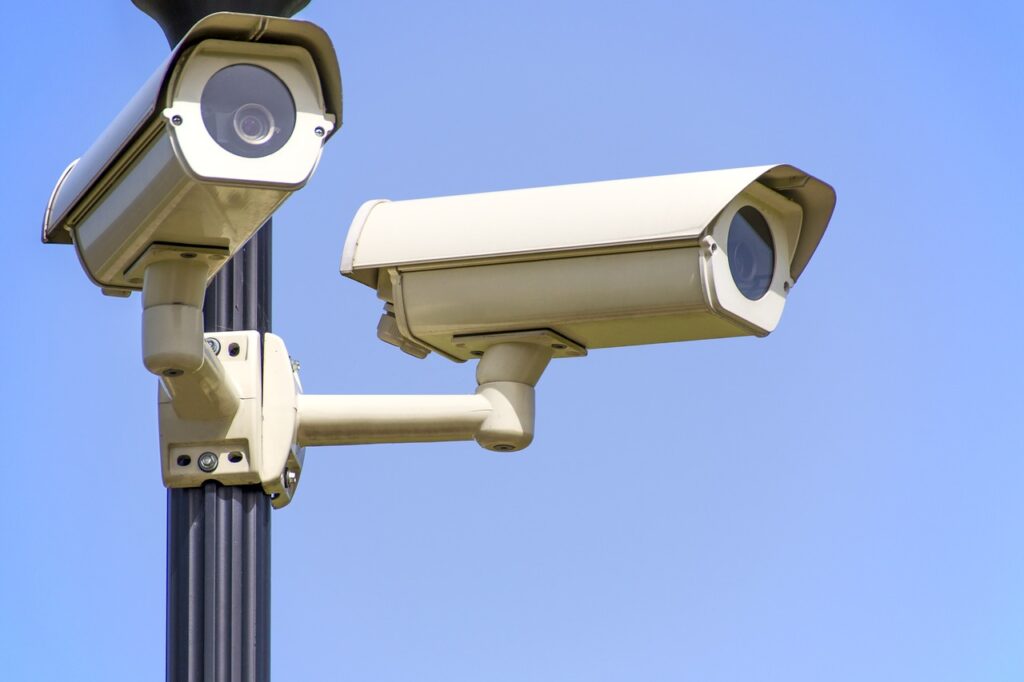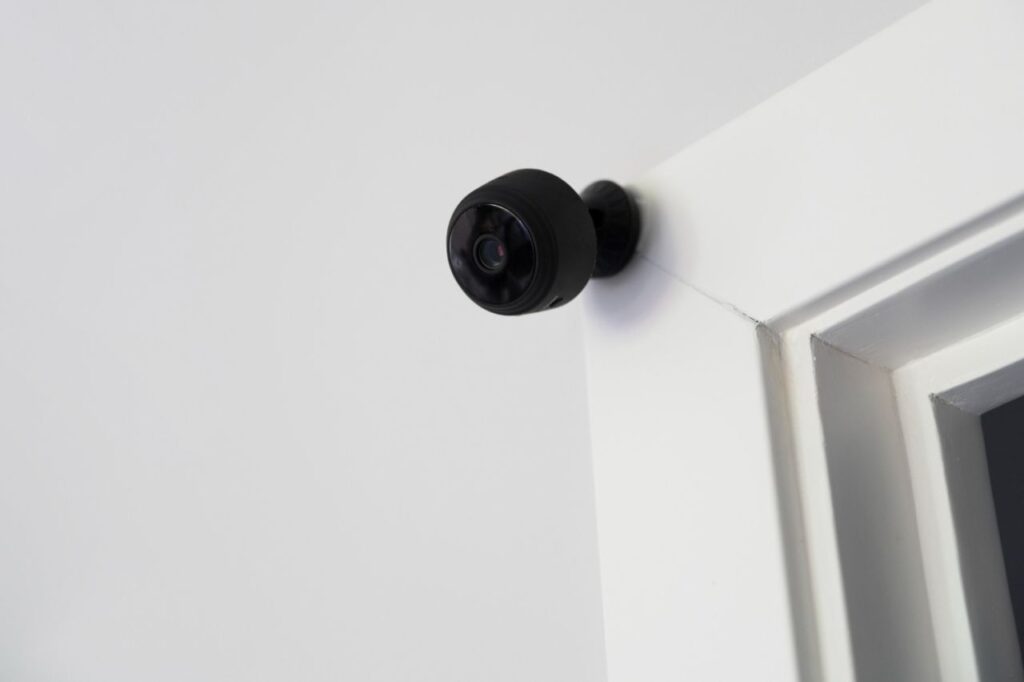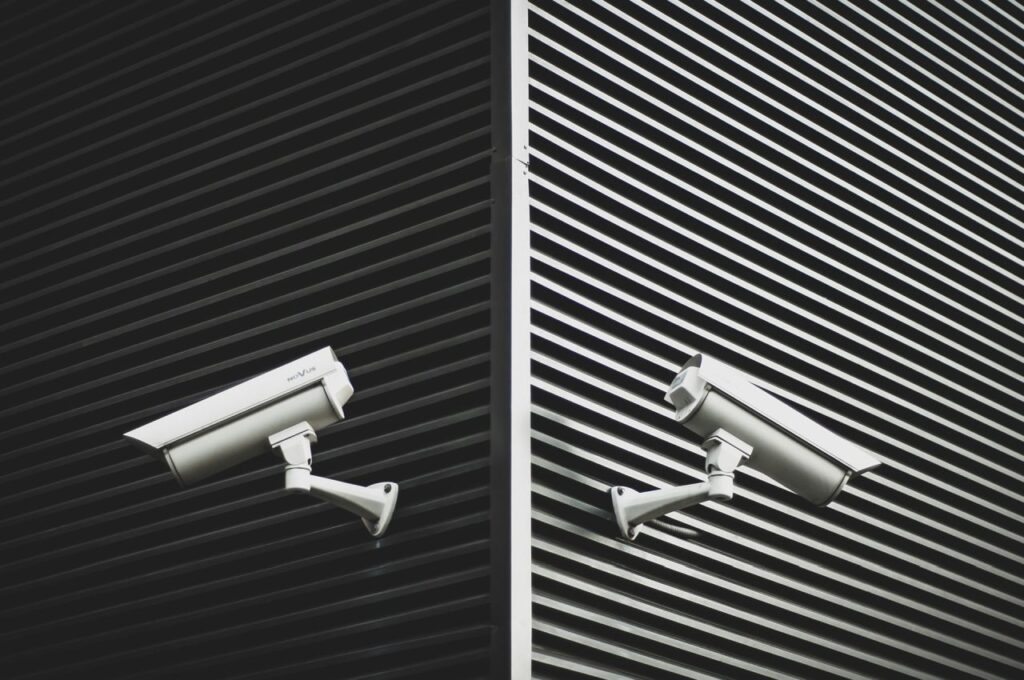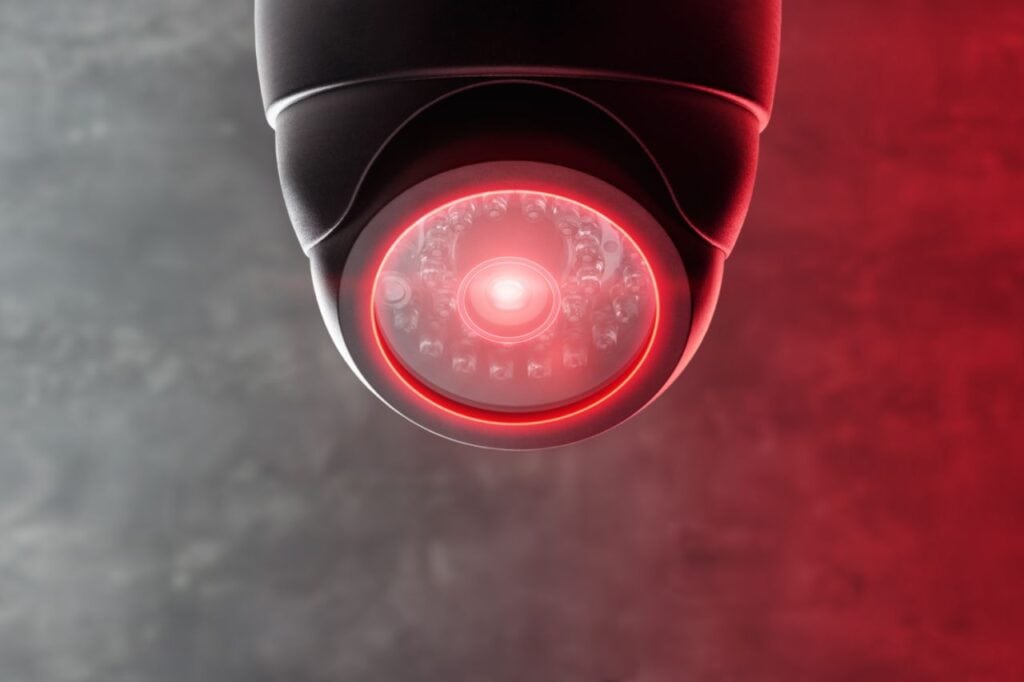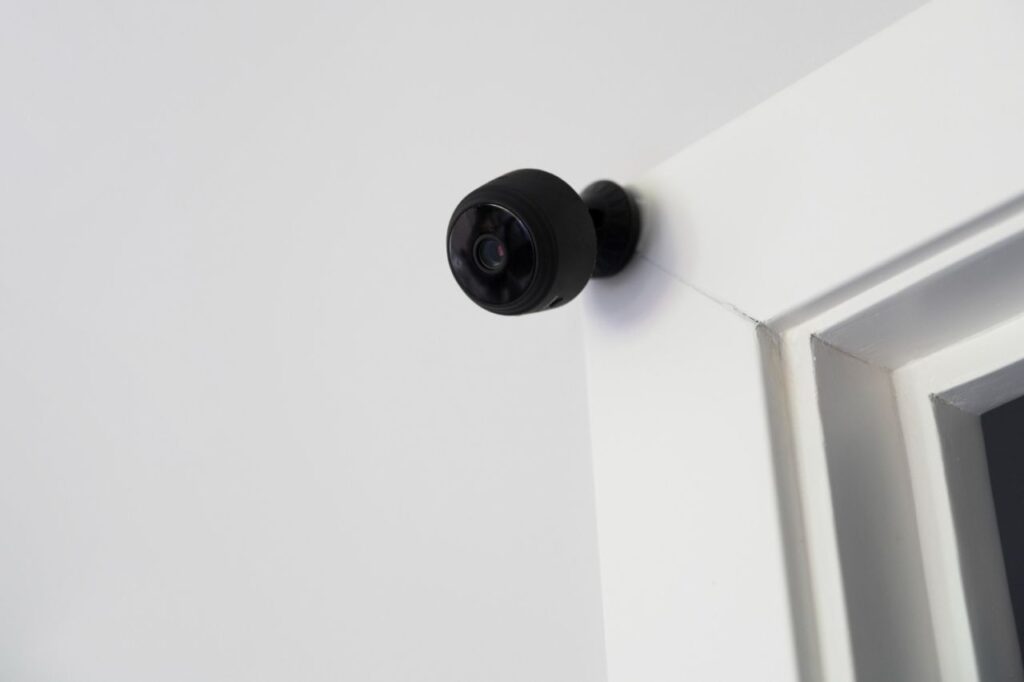Managing customer access in a way that doesn't disrupt operations is crucial in today's fast-paced retail settings for customer safety, productivity, and satisfaction.
What Role Do Access Control Systems Play In Shopping Centre Entrances And Exits?" is the driving question behind this operational strategy.
Shopping centre safety standards and operational efficacy are greatly enhanced by access control systems, which are crucial for regulating the entry and exit of individuals.
Electronic key cards, biometric authentication, and surveillance integration are just a few of the technological solutions that these systems use to keep an eye on and manage all of the access points.
This preventative measure protects the shopping centre from possible security risks and helps customers move around more easily, improving their experience there.
We dive into the revolutionary impact of access control systems on improving security measures and optimising the daily operations of shopping centre entrances and exits as we explore the diverse role of these systems.
What Does Access Control Mean?
When used in its widest meaning, "access control" describes the capability to restrict physical or virtual entry to a specified location. This essay will cover physical access control since we are in the physical security market.
Security measures that are put in place to prevent unauthorised entry or access to specified locations are known as physical access control.
To restrict entry and exit, a building may, for instance, set up an access control point at its main door. It is possible to install more access control systems inside the building to limit further who can enter certain sections.
If we're being very definitional, conventional door locks and keys are examples of an access control system. However, access control is more often used to describe more sophisticated systems in the security sector, such as doors requiring a password or key card.
Various forms of biometric door control, security turnstiles and gates, and even the presence of armed security guards are all instances of physical access control.
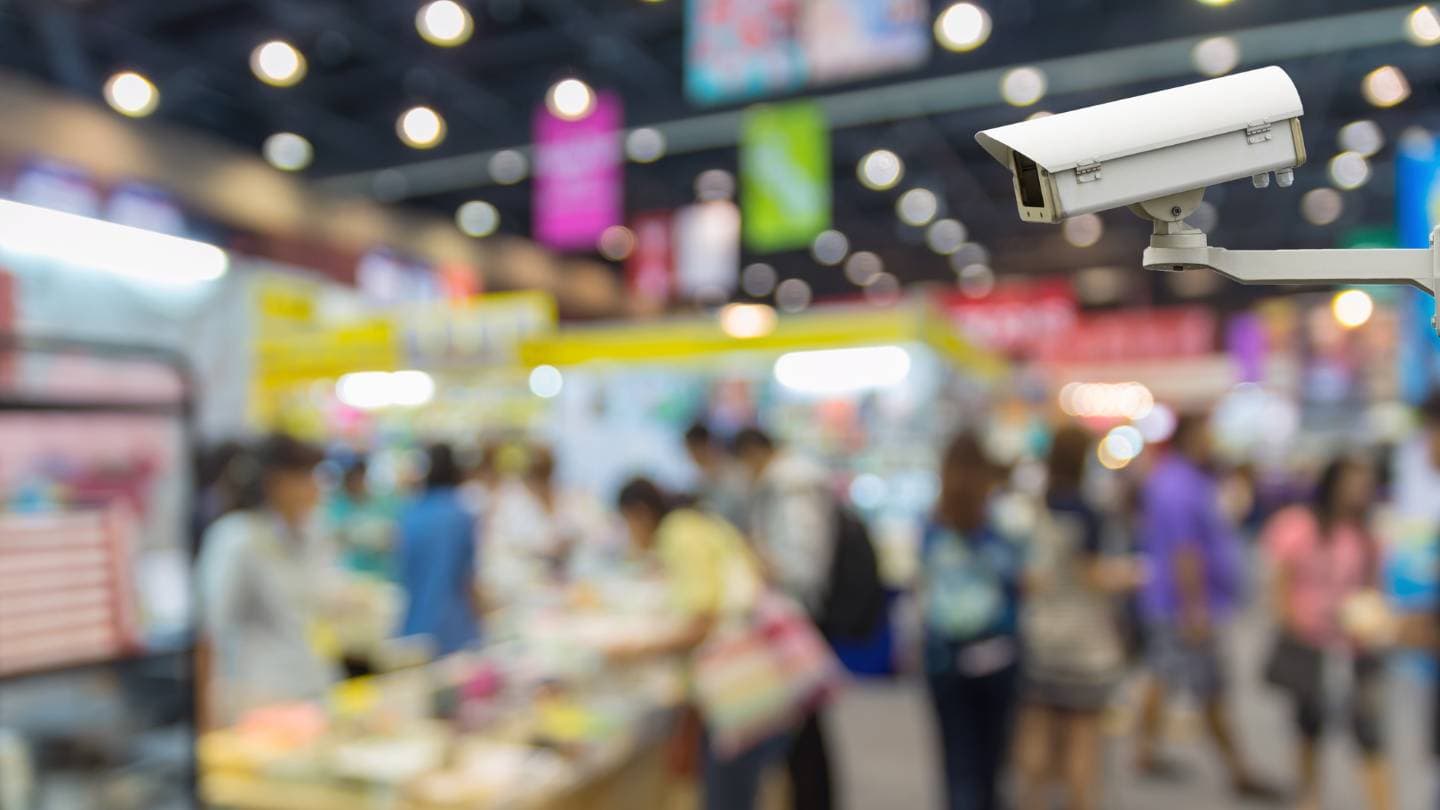
What Is The Point Of Physical Access Control?
You probably don't give access control systems a second thought because of all the commonplace ways you encounter them.
Turnstiles at concerts, where employees check tickets before letting people through, are an example of access control.
You may already be familiar with one kind of access control system—the locked doorways to high-security offices that demand key cards or fingerprint scanners from staff.
To sum up, access control is essential to any thorough business security plan and, in most instances, the initial barrier against unwanted visitors.
Additionally, access control systems lessen the number of people entering a space, a byproduct of avoiding forming large groups of people.
Everyday security dangers, including forced entry and burglary, and more significant threats, such as active threat occurrences, can be mitigated by implementing access control systems in commercial facilities.
Having an access control system can deter criminals and make people feel secure in a building.
Some facilities that might greatly benefit from installing an access control system are:
- Workplaces and university campuses
- Academic institutions
- section of stores that are off-limits to customers
- Various banking
- Public structures
- Medical Facilities
- Additional commercial structures and locations with high levels of protection
Buildings can have one or many access control points, depending on the sort and size of the property. Depending on clearances and security concerns, it may also use various forms of access control to regulate who can enter certain areas (e.g., key cards, codes, security checkpoints, etc.).
Consider a bank; for example, there's generally a guard stationed at the front door and sometimes an electronic lock that only a single teller or guard can open.
The doors leading to the bank's vault and safe deposit boxes, which are extremely sensitive regions, probably have coded, keycard, and fingerprint-controlled locks.
A building's security is directly proportional to the number of access control systems installed within it; nevertheless, this is far from the only factor to consider.
Retail Access Control: For Security, Efficiency, And Shop Experience
As a retailer, you may want to optimise your product to meet the evolving demands of the market & boost operational efficiency because the retail industry is always changing. Technology is increasingly utilised to improve in-store capabilities to meet customers' desire for a digitally convenient and unified shopping experience across all channels.
The retail industry is introducing increasingly complex digital solutions, such as click-and-collect services, automated checkouts, and autonomous stores, to keep up with consumer demands.
Open IP network access control is one example of cutting-edge technology that is now being utilised. Access control solutions are becoming more popular in retail settings due to their user-friendliness, speed, and convenience for customers and employees.
Modern access control solutions can improve and modernise your retail store's offering in various ways, including improving the shopping experience, limiting who can enter certain areas, and preventing theft.
Making Cashierless And Hybrid Stores Possible
You may now oversee operations remotely with the advent of increasingly complex access control systems, facilitating the migration to cashierless or hybrid businesses.
Take advanced planned door access as an example. It allows you to choose the duration for which you will be permitted entrance. Any attempt to access the system outside these hours will be met with extra security measures and authentications.
To take these safeguards to the next level, businesses can implement door-locking systems that only allow authorised individuals, such as security guards, access based on a predetermined PIN, card number, or access rule. This "first person in" method works especially well for hybrid shops.
Installing network intercoms at the entry and exit of the store to recognise the use of static or dynamic QR codes helps provide seamless authentication in cashier-less stores. This is what customers can use to get into the store.
After customers step inside, they can listen to a personalised marketing message over IP audio (e.g., speakers mounted on the ceiling or in the cabinets) to elevate their shopping experience. At the same time, in-store monitors display a welcoming message. Customers could easily exit the store after making a purchase at the self-checkout by scanning a QR code on their receipt or mobile phone with the built-in camera at the service terminal.
This kind of system, which combines video and access control, would be priceless in the event of an incident. Suppose, for instance, a consumer cannot enter your store for security reasons. In that case, the operation centre can be alerted instantly, validate the customer's identity, and remotely unlock the door to allow them access.
Searching for instances of ID-holder admission denial also yields video footage of the occurrence with a synchronised time stamp and a log. Because of this data, it is no longer necessary to search and combine various information from two databases to construct an incident report. Not only does this show that store entry may be securely monitored remotely, but it also saves time and resources.
Retail Management Using New Solutions
With the capacity to manage smooth and secure access to different regions inside your premises, access control can additionally be utilised to support the administration of in-store operations.
With the integration of edge-based intelligence, the security system has expanded its capabilities far beyond just granting customers entry. This technology can surpass the limitations of analogue and proprietary systems once network intercoms, cameras, and sensors cooperate, and smart analytics are implemented.
All entrance points, including store, stock rooms, and administrative areas, can be centrally managed by introducing sophisticated, IP-based access control. To keep things running smoothly, these technologies are already used in retail delivery locations where cars continually drop off or retrieve products.
- During normal business hours, a gate will open as soon as the licence plate recognition software in the camera detects the delivery truck, as long as the company has registered their vehicle beforehand.
- An additional safeguard can be implemented at night: a notification is sent to the control centre when the camera detects the truck. After visually verifying everything is in order, an operator opens the gate remotely.
These skills can easily be recreated in-store, which is great news for the retail industry seeking more inventive solutions to oversee operations and alleviate worker pressure. For instance, practically any credential can now be added to operate a function or door.
Network door controllers now offer a highly secure and versatile solution for multi-factor authentication, which can range from more conventional access identity types like key fobs and PIN codes to more modern ones like static and dynamic QR codes or licence plate recognition for vehicle access.
Additionally, access control can automate operations that make it easier for employees to travel throughout your store. For example, the main store and stockrooms can be connected to the main store automatically through QR codes on badges.
Using this touchless solution, your employees will have an easier time moving throughout the store, which is especially helpful when moving heavy boxes of inventory from one area to another. This will not only make things easier for your employees, but it will also save them time—possibly several hours every week.
These solutions can also monitor several stores in one system, all over the same network, simplifying operations thanks to their multi-site capabilities.
Combining Technology To Secure Retail
Keeping customers safe is still important for stores, especially during busy shopping hours. Appropriate technology can better help staff by ensuring high safety while providing excellent service and an enjoyable experience for customers.
It could seem like a no-brainer to deploy physical security systems; after all, stores have long employed cameras to keep customers and employees safe from criminals. Integrating access control systems with additional safety features enables seamless cameras, sensors, and network intercoms integration.
This can greatly improve retail security, especially in stores that use technology and have fewer employees.
The ability to establish rules & triggers that can enhance in-store security is made possible by integrating technology with an action rule engine that is intelligent, powerful, and user-friendly.
- You can limit entry to your store to a single consumer at a time by integrating a person's counter with your current entrance camera system. If more than one consumer is detected, this real-time detection will restrict access and trigger an alarm. Customers can be notified of this by a pre-recorded message or addressed directly through a linked service centre with the help of network audio.
- Protecting high-value items stored in drawers or cabinets is another common usage of integrated solutions in high-end retail. When an employee opens the drawer, a message is communicated to the rest of the workers through the speaker in the break area. Staff can remotely monitor activities by viewing images from a camera pointed towards the drawers on the display in the back office. Also, in the event of an incident, doors can be quickly locked using advanced access control technology.
- Building a "vestibule" with two sets of interlocking doors is another option for improving access control options. Because it opens the second set of doors only after the first set closes, this can be an extra safe method to store valuables. You can regulate access from a distance with a networked video intercom that uses visual identification and two-way communication. In addition to enhancing security measures, this also decreases the need for extra security staff.
You can incorporate combination solutions to enhance security and minimise theft risk if you own potentially expensive goods. This compatibility is not restricted to luxury retail.
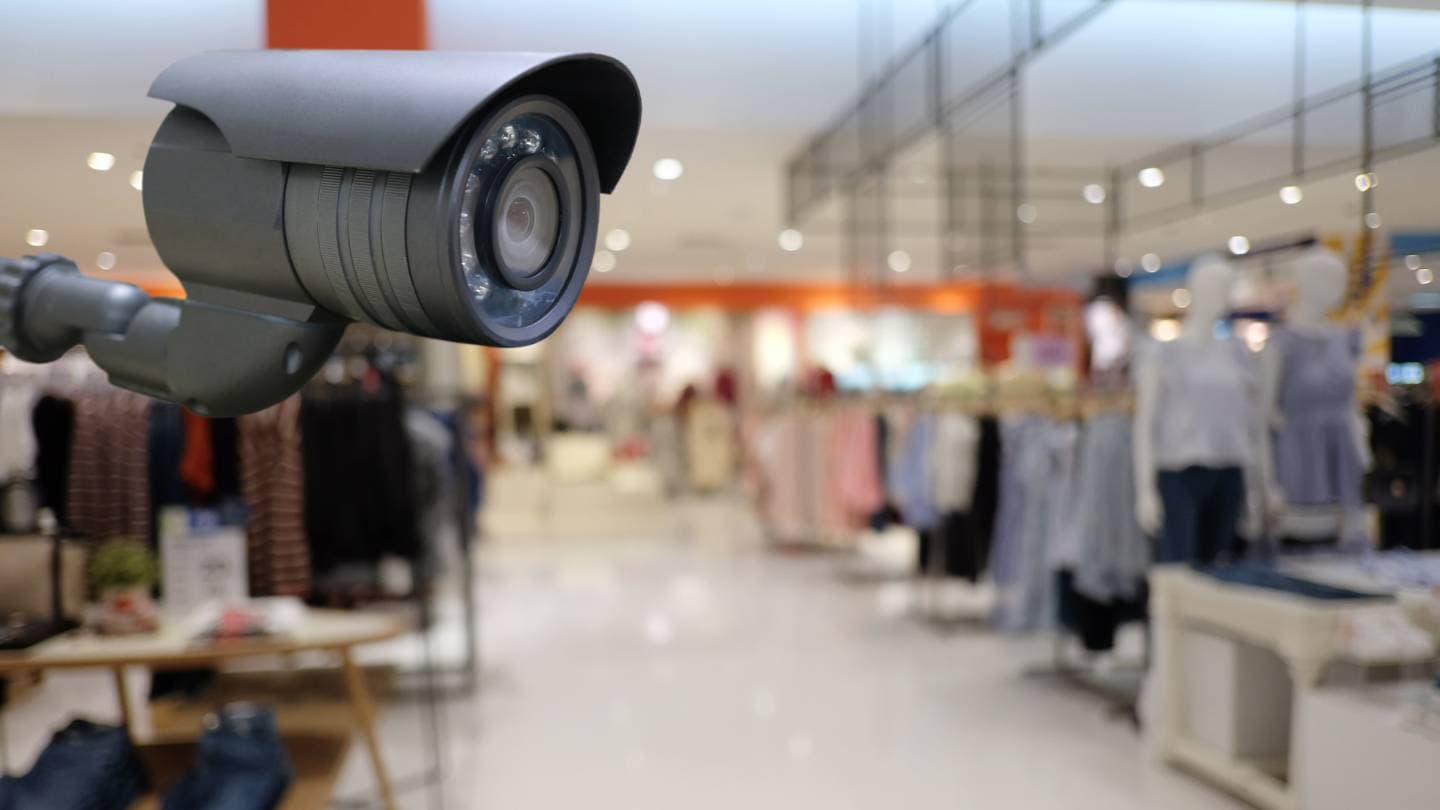
Retail Solutions Prioritise Scalability
Being able to expand in response to customer demand is a constant struggle for retailers. The ability to swiftly expand your store size or quantity gives you a competitive edge, but your security solutions must be flexible enough to do the same.
Incorporating multi-site capabilities allows for centralised control across any number of stores, and edge-based access control guarantees scalability and futureproofing regardless of the number of doors in the system. In addition, the system's extensibility makes it simple to incorporate new network intercoms, devices, or features as your company's requirements evolve. Also, with edge intelligence, solutions don't need laborious wiring to a central server, making scaling much easier.
To make this happen, we need open, universal standards and platforms for technology. When solutions from different vendors work together, they can create something much better than what was originally available. With these platforms as a starting point, you may make great strides in creating smart locations in retail establishments.
Retail's Future Includes Intelligent Access Control
The need for increasingly sophisticated access control systems will grow as the retail industry changes to meet shifting consumer tastes and marketing demands.
With the latest innovative features and functionalities, you can personalise and enhance your solutions to elevate the shop experience. Improve your security offering and operations management further by integrating the most recent advances into a single solution.
By implementing modern technology, you can guarantee your ability to be competitive as a shop right now and in the future.
Conclusion
Access control systems play a crucial role in enhancing safety standards and operational efficiency in retail settings. These systems regulate entry and exit, using technologies like electronic key cards, biometric authentication, and surveillance integration. These systems protect shopping centers from security risks and improve customer experience. Examples of physical access control include turnstiles, biometric door control, security gates, and armed security guards.
They are essential for businesses, workplaces, academic institutions, and public structures. Retail access control systems can improve security, efficiency, and the shopping experience by limiting entry, preventing theft, and enhancing the overall shopping experience. The retail industry is constantly evolving, and access control solutions are becoming more popular due to their user-friendliness, speed, and convenience.
Cashierless and hybrid stores are becoming more accessible, allowing for remote operations and enhanced security measures. Advanced door access systems, door-locking systems, and network intercoms can provide seamless authentication and enhance customer experience. In-store monitors display welcoming messages and QR codes for easy exit.
Edge-based intelligence can also support in-store operations, allowing for central management of entrance points and integrating various credential types. Network door controllers offer secure, multi-factor authentication solutions, automating operations and simplifying operations. These solutions can also monitor multiple stores in one system, simplifying operations and saving time and resources. Overall, these advancements in access control systems are revolutionizing retail management.
Retail security can be enhanced by integrating technology with physical security systems, such as cameras and sensors. This can improve in-store security, especially in stores with fewer employees. Combination solutions can limit entry to a single consumer, protect high-value items, and regulate access from a distance.
Retail solutions should prioritize scalability, allowing for centralized control across multiple stores and futureproofing. Open, universal standards and platforms for technology can help create smart locations in retail establishments. As the retail industry evolves, intelligent access control systems will become increasingly important.
Content Summary:
• Access control refers to the ability to restrict physical or virtual entry to a specified location.
• It can be implemented at the main door or more access control systems can be installed to limit entry to specific sections.
• Examples of access control systems include conventional door locks and keys, biometric door control, security turnstiles and gates, and armed security guards.
• Access control systems can be found in commonplace settings like turntables at concerts and locked doorways in high-security offices.
• They can deter criminals and make people feel secure in a building.
• Facilities that could benefit from access control systems include workplaces, university campuses, academic institutions, off-limits stores, banking, public structures, medical facilities, and other commercial structures.
• Retailers are increasingly using technology to improve in-store capabilities and meet customer demands for a digitally convenient and unified shopping experience.
• Open IP network access control is a popular technology in retail settings due to its user-friendliness, speed, and convenience.
• Modern access control solutions can improve and modernize a retail store's offering, including improving the shopping experience, limiting who can enter certain areas, and preventing theft.
• The advent of complex access control systems allows for remote operations in cashierless or hybrid businesses.
• Advanced planned door access allows for controlled entrance durations, with additional security measures for outside access attempts.
• Door-locking systems allow authorized individuals to access based on predetermined PIN, card number, or access rule.
• Network intercoms at the store's entry and exit recognize the use of static or dynamic QR codes for seamless authentication.
• Customers can listen to a personalized marketing message over IP audio and exit the store by scanning a QR code on their receipt or mobile phone.
• In case of an incident, the operation centre can be alerted, validate the customer's identity, and remotely unlock the door.
• Video footage of incidents of ID-holder admission denial can be gathered, saving time and resources.
• Access control can support the administration of in-store operations.
• Edge-based intelligence can expand security system capabilities beyond granting customer entry.
• IP-based access control can manage all entrance points, including store, stock rooms, and administrative areas.
• Network door controllers offer a secure and versatile solution for multi-factor authentication.
• Access control can automate operations, making it easier for employees to move throughout the store.
• These solutions can monitor several stores in one system, simplifying operations.
• Technology can enhance customer safety and service in retail stores.
• Physical security systems can be integrated with access control systems for enhanced safety.
• Intelligent, powerful, and user-friendly action rule engines can enhance in-store security.
• Real-time detection of multiple customers can restrict access and trigger alarms.
• Integrated solutions can protect high-value items stored in drawers or cabinets.
• Building a "vestibule" with interlocking doors can provide extra safety.
• Networked video intercoms can regulate access from a distance, reducing the need for additional security staff.
• Combination solutions can enhance security and minimize theft risk, not just for luxury retail.
• Retail solutions must be flexible enough to expand in response to customer demand.
• Incorporating multi-site capabilities and edge-based access control ensures scalability and futureproofing.
• Open, universal standards and platforms for technology can help create smart retail locations.
• The need for sophisticated access control systems will grow as the retail industry changes.
• Integrating the latest advances into a single solution can personalize and enhance solutions, improving security and operations management.
Frequently Asked Questions
An access control system in shopping centres refers to a security mechanism that regulates and monitors the entry and exit of individuals. It typically involves keycards, biometric systems, or other authentication methods to control access.
Access control systems enhance security by preventing unauthorised access to certain areas within the shopping centre. They help protect customers and property, reducing the risk of theft, vandalism, or other security incidents.
Common access control methods include keycard systems, PIN codes, biometric identification (fingerprints or facial recognition), and intercom systems. These methods provide a range of options for managing access.
Access control systems restrict access to sensitive areas, ensuring that only authorised personnel can enter. This helps prevent incidents such as shoplifting, unauthorised access to storage areas, and other security breaches, contributing to a safer shopping environment.
Access control systems can be integrated with CCTV cameras, alarms, and other security systems. This integration allows for a comprehensive security network, providing real-time monitoring and a quick response to security threats.


